
A blizzard is a severe snowstorm characterized by strong sustained winds and low visibility, lasting for a prolonged period of time—typically at least three or four hours. A ground blizzard is a weather condition where snow is not falling but loose snow on the ground is lifted and blown by strong winds. Blizzards can have an immense size and usually stretch to hundreds or thousands of kilometres.
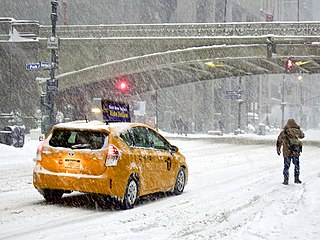
A winter storm is an event in which wind coincides with varieties of precipitation that only occur at freezing temperatures, such as snow, mixed snow and rain, or freezing rain. In temperate continental climates, these storms are not necessarily restricted to the winter season, but may occur in the late autumn and early spring as well. A snowstorm with strong winds and other conditions meeting certain criteria is called a blizzard.

The North American blizzard of 1996 was a severe nor'easter that paralyzed the United States East Coast with up to 4 feet (1.2 m) of wind-driven snow from January 6 to January 8, 1996. The City University of New York reported that the storm "dropped 20 inches of snow, had wind gusts of 50 mph and snow drifts up to 8 feet high." This storm was a classic example of a nor'easter, but the storm would not have been as historically significant without the presence of the arctic high pressure system located to the north of New York. It was followed by another storm, an Alberta Clipper, on January 12, then unusually warm weather and torrential rain which caused rapid melting and river flooding in the Northeast Floods later that month. Along with the March Superstorm of 1993 and the January 2016 United States blizzard, it is one of only three snowstorms to receive the top rating of 5, or "Extreme", on the Northeast Snowfall Impact Scale (NESIS).

The Blizzard of 2003, also known as the Presidents' Day Storm II or simply PDII, was a historic and record-breaking snowstorm on the East Coast of the United States and Canada, which lasted from February 14 to February 19, 2003. It spread heavy snow across the major cities of the Northeastern and Mid-Atlantic states, making it the defining snowstorm of the very snowy winter of 2002–2003.
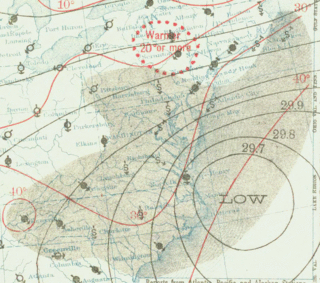
The Knickerbocker storm was a blizzard on January 27–28, 1922 in the upper South and the middle Atlantic United States. The storm took its name from the resulting collapse of the Knickerbocker Theatre in Washington, D.C., shortly after 9 p.m. on January 28, which killed 98 people and injured 133.
Andrew Jackson Barchfeld was a Republican member of the United States House of Representatives from Pennsylvania.
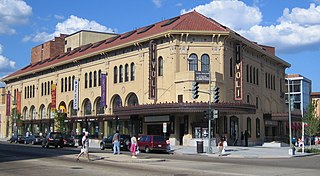
The Tivoli Theatre is a landmark building in the Columbia Heights neighborhood of Washington, D.C., on 14th Street and Park Road Northwest. Originally built as a movie theater, it currently exhibits live stage productions as the home of the GALA Hispanic Theatre.
Disasters of the Century is a documentary television series that airs on History Television. The program is produced by Regina, Saskatchewan-based Partners in Motion.
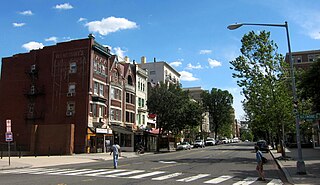
Columbia Road is a street in Washington, D.C., that forks from Connecticut Avenue north of Dupont Circle, and branches north and east through 16th Street to the McMillan Reservoir. Along its route, it marks the southern border of the Kalorama Triangle neighborhood, the principal east/west passage through the Adams Morgan neighborhood, and is one of the primary thoroughfares in the Columbia Heights neighborhood. In Adams Morgan, it is bordered by a great deal of street-level retail, constituting the main commercial area within Adams Morgan.

The Iran blizzard of February 1972 was the deadliest blizzard in history, as recorded by the Guinness Book of Records. A week-long period of low temperatures and severe winter storms, lasting 3–9 February 1972, resulted in the deaths of over 4,000 people. Storms dumped more than 3 metres of snow across rural areas in northwestern, central and southern Iran. The blizzard came after four years of drought.
The Ambassador Theater was a theater located at 2454 18th Street and Columbia Road, NW, Washington, D.C. It was most notable for a six-month period in the 1960s when it was a psychedelic concert and dance hall.

The December 2009 North American blizzard was a powerful nor'easter that formed over the Gulf of Mexico in December 2009, and became a major snowstorm that affected the East Coast of the United States and Canadian Atlantic provinces. The snowstorm brought record-breaking December snowfall totals to Washington, D.C., Baltimore, and Philadelphia.
The East Asian snowstorms of 2009–2010 were heavy winter storms, including blizzards, ice storms, and other winter events, that affected East Asia from 8 May 2009 to 28 February 2010. The areas affected included Mongolia, China, Nepal, the Korean Peninsula, Japan, Kuril Islands, Sea of Okhotsk, Primorsky, and Sakhalin Island.

The February 5–6, 2010 North American blizzard, commonly referred to as Snowmageddon, was a blizzard that had major and widespread impact in the Northeastern United States. The storm's center tracked from Baja California Sur on February 2, 2010, to the east coast on February 6, 2010, before heading east out into the Atlantic. Effects were felt to the north and west of this track in northern Mexico, California, and the southwestern, midwestern, southeastern, and most notably Mid-Atlantic states. Severe weather, including extensive flooding and landslides in Mexico, and historic snowfall totals in every one of the Mid-Atlantic states, brought deaths to Mexico, New Mexico, Virginia, Pennsylvania, and Maryland.

The January 8–13, 2011 North American blizzard was a major Mid-Atlantic nor'easter and winter storm, and a New England blizzard. The storm also affected portions of the Southeastern regions of the United States. This storm came just two weeks after a previous major blizzard severely affected most of these same areas in December 2010. It was the second significant snowstorm to affect the region during the 2010–11 North American winter storm season.
The January 25–27, 2011 North American blizzard was a major Mid-Atlantic nor'easter and winter storm, and a New England blizzard that affected portions of the northeastern United States and Canada. This storm came just two weeks after a previous major blizzard had already affected most of these same areas earlier on the same month of January 2011. The storm also came just one month after a previous major blizzard that affected the entire area after Christmas in December 2010. This storm was the third significant snowstorm to affect the region during the 2010–11 North American winter storm season. It was followed a few days later by another massive storm that blanketed much of the United States and Canada.
Reginald Wycliffe Geare was an American architect known for his design of theaters. His career was ended by the Knickerbocker Theatre disaster, when a record snowfall collapsed the theater's flat roof, killing 98.
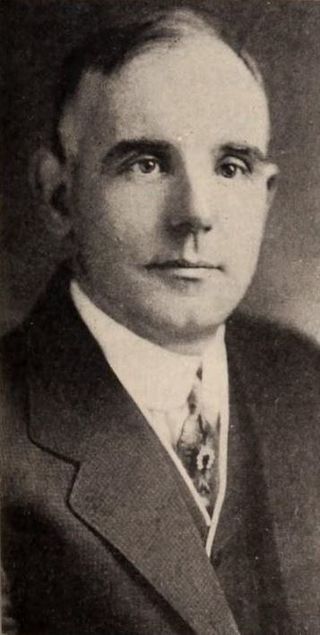
Harry Milton Crandall (1879–1937) was an American businessman who owned a chain of 18 theaters in Washington D.C., Maryland, Virginia, and West Virginia. Among the theaters he owned was the Savoy, in Washington, D.C., his fourth acquisition.

The January 2015 North American blizzard was a powerful and severe blizzard that dumped up to 3 feet (910 mm) of snowfall in parts of New England. Originating from a disturbance just off the coast of the Northwestern United States on January 23, it initially produced a light swath of snow as it traveled southeastwards into the Midwest as an Alberta clipper on January 24–25. It gradually weakened as it moved eastwards towards the Atlantic Ocean, however, a new dominant low formed off the East Coast of the United States late on January 26, and rapidly deepened as it moved northeastwards towards southeastern New England, producing pronounced blizzard conditions. The nor’easter then gradually weakened as it moved away into Canada. The storm was also given unofficial names, such as Blizzard of 2015, and Winter Storm Juno.

The January 2016 United States blizzard produced up to 3 ft (91 cm) of snow in parts of the Mid-Atlantic and Northeastern United States during January 22–24, 2016. A weather system, evolving from a shortwave trough that formed in the Pacific Northwest on January 19, consolidated into a defined low-pressure area on January 21 over Texas. Meteorologists indicated that a resultant storm could produce more than 2 ft (61 cm) of snow across a wide swath of the Mid-Atlantic region and could "paralyze the eastern third of the nation", and regarded it as a "potentially historic blizzard". Winter weather expert Paul Kocin described the blizzard as "kind of a top-10 snowstorm".


















